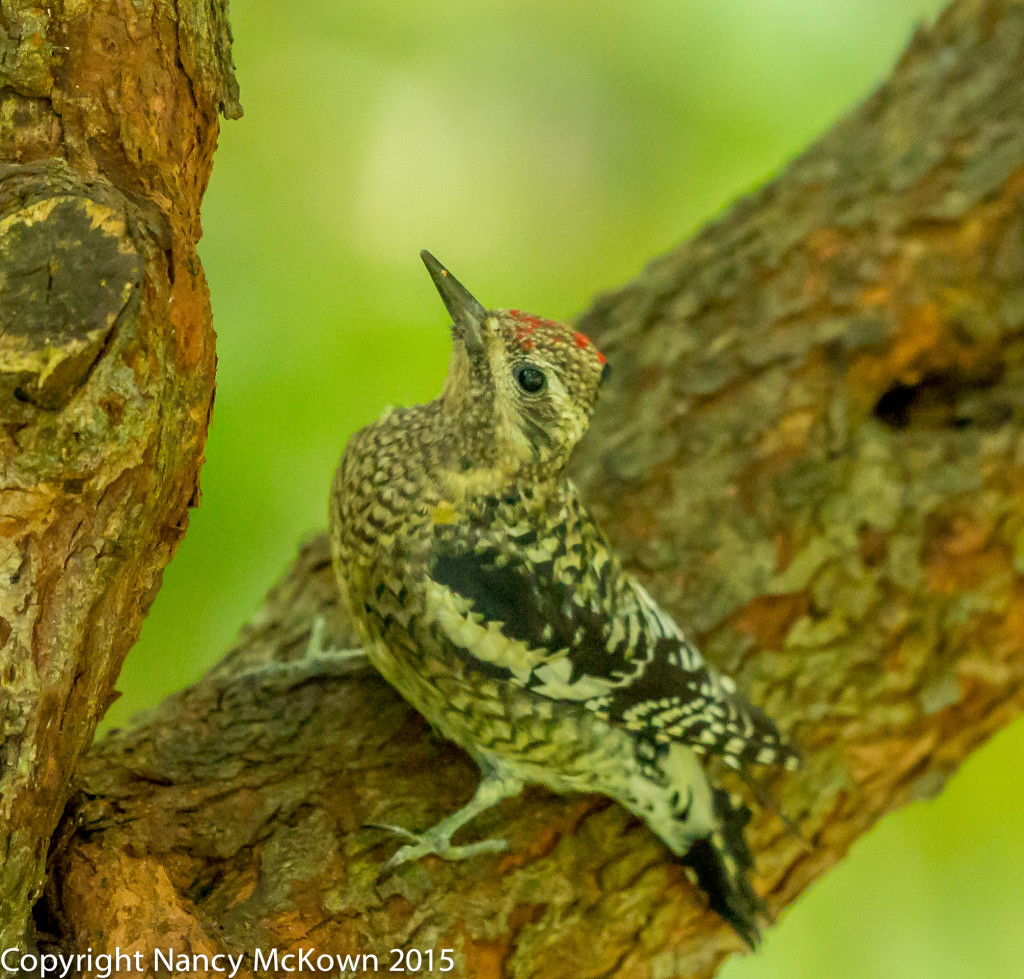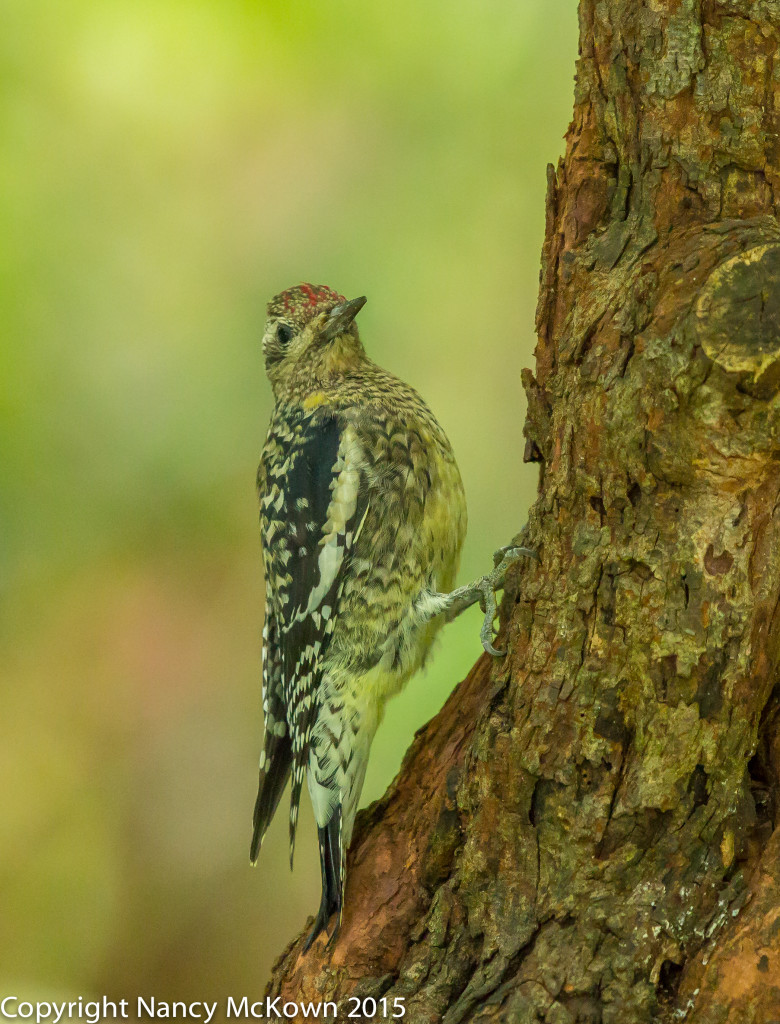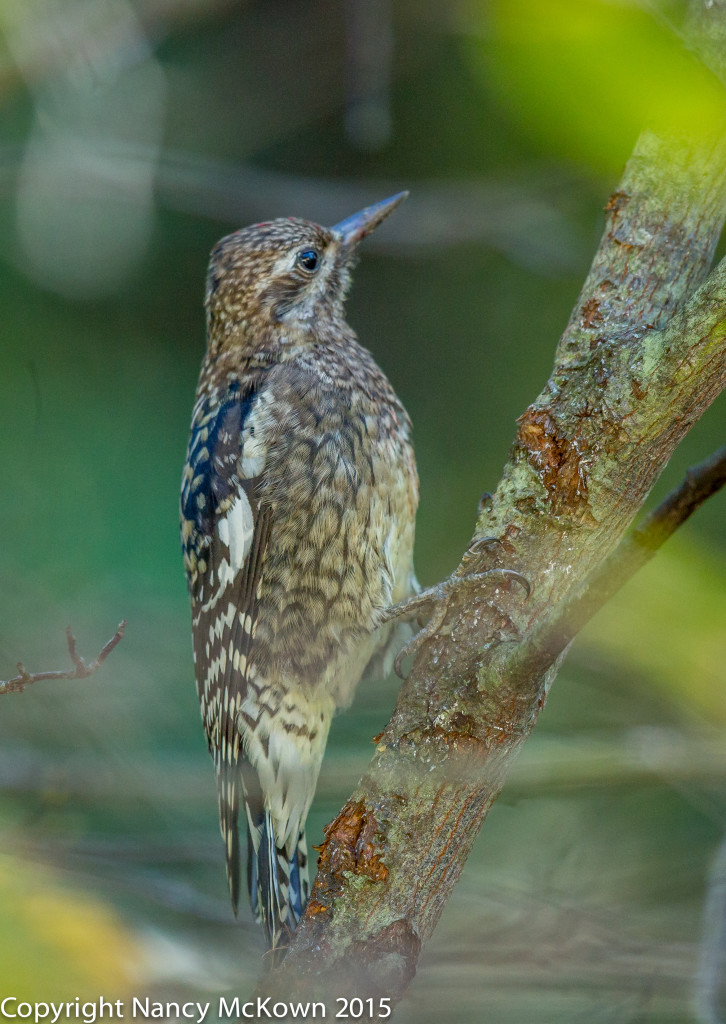A New Woodpecker Comes to Town
Everybody has heard of this bird. Its name has been used in cartoon comedy for decades. The first time I saw a live Yellow Bellied Sapsucker was last week, clinging with its large, sharp claws onto the crusty trunk of the red bud tree right outside my window. I’m used to seeing lots of woodpeckers, most of which stick around all winter. But photographing this transient, so distinctly wood-peckerish with its shock absorbing thick-head, chisel bill, and oversized clinging 4 toed feet (zygodactyl – two toes forward, two toes back) was a treat.

ISO3200; f/4; 1/500 Second.
Drummer of Tree Bark
Yellow-bellied Sap Suckers are long distance migrators whose plumage looks quite different from our resident woodpeckers. Sapsuckers are woodland cavity nesters whose stiff tail feathers act as a prop as they hop up and down on tree trunks and drum on the bark. Like most large and mucivorous woodpeckers, they excavate the tree bark for sweet sap. Once these neatly arranged shallow holes are drilled, they feed and re-feed at their dripping “sap wells”, using their brush-like tongues to suck up the sap. A good part of their daily routine involves maintaining and protecting their oozing sap wells from other sap loving marauders.

ISO5000; f/4; 1/500 Second
Insufficient Contrast and Light
My ISO readings soared as I photographed this Yellow-Bellied Sapsucker clinging to the shedding red bud tree trunk. Despite my exposure settings, (low shutter speed and wide open aperture, mostly), conditions were just too dark to get a decent ISO.
Even sophisticated autofocus systems can only do so much when insufficient contrast and light are available. In addition, too much noise (caused by high ISO) disrupts the edges of an image, making them lose clarity and detail. The noise reduction software in Lightroom helps, but the more you try to reduce the noise in post processing, the more sharpness suffers.
The Canon 5D Mark III DSLR camera has a well balanced 22.3MP sensor, but the lack of sharpness on these images is readily noticeable. The only real noise reduction advantage I had during this shoot was that I photographed this woodpecker at fairly close range, thus reducing the need to zoom in and crop.

ISO4000; f/4.5; 1/500 Second
The Sensors of Tomorrow
Since I photograph birds in low light conditions so often, I take notice of the research about new DSLR sensors under development. A new and improved 120MP sensor working prototype was introduced at the 2015 Canon Expo. Good thing hard drive space is cheap because each exported raw image gobbles up 210MB. This incredible resolution means that you can keep zooming and cropping in post processing (on a video monitor with enhanced resolution) and still see only fine detail, not pixels.
At this point in development, the 128MP sensor demands the brightest of light to achieve sharp resolution. The DSLR camera that housed this new sensor was fixed at ISO100. Too bad.
See this post about the advantages and limitations of the 50MP sensor Canon introduced this year on the Canon 5DS.
Addendum: To my surprise, the Yellow Bellied Sapsucker came back the next day. The light was better, so the ISO was considerably reduced. (See photo below.)

ISO1600; f/4.5; 1/500 Second








